
Inner Entrepreneur: A Proven Path to Profit and Peace
by
Grant Sabatier
Published 10 Mar 2025
Experimentation will also help you build resilience. Markets, demand, technologies, and customers constantly change. The better you are at iterating and experimenting, the better equipped you’ll be to adapt to the world’s increasing uncertainty. Level 2: The Solopreneur Solopreneurs are entrepreneurs who operate alone. They have no full-time employees and keep their expenses low to maximize profit. The Solopreneur level is when your business grows from a side gig into a real, sustainable business. Here, you start generating more consistent revenue but must still trade a fair amount of your time for money. If you keep at it, however, you can start building systems that allow you to free up your time so you can focus on bigger-picture strategy and living your life.
…
Now, if you’ve already found an idea you love, you’re making some money, and you’re excited and have some momentum, you’re ready for the next level. LEVEL 2 The Solopreneur The Solopreneur level is when your business grows from a side gig into a real, sustainable business—one built for long-term growth. This level is all about building sustainability: a sustainable and growing community that buys your products, sustainable cash flow that covers and then exceeds your living expenses, and sustainable systems powered by technology and people so you can free up your time. Solopreneurs can have the freedom of being an entrepreneur, but one of the challenges with solopreneurship is that your business and your life are often intertwined.
…
Many companies just run out of oxygen because the business owner lost their momentum. As an entrepreneur, especially a Solopreneur, it’s essential to cultivate this energy early and often. The people with whom you surround yourself will either feed your energy or try to suck it up. This is why finding the right people to work with is vital. Just because you’re a Solopreneur doesn’t mean you need to be a business of one; in fact, surrounding yourself with great people will only enrich your business and your life. In many ways, the Solopreneur stage is the make-or-break moment for your business. Do you lay the foundation to automate, systemize, and outsource, or do you burn out from trying to do it all yourself?
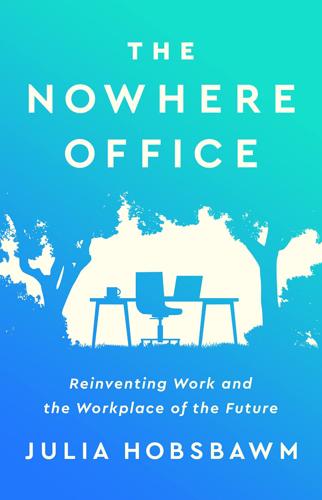
The Nowhere Office: Reinventing Work and the Workplace of the Future
by
Julia Hobsbawm
Published 11 Apr 2022
Identity and status may come not to matter as much as the way you live and work. Everyone in the Nowhere Office is now managing a new career model, one where they have to take responsibility for everything, and if you had to name a single universal worker identity now it would be the ‘solopreneur’. While the rise in entrepreneur-led business during the pandemic is striking – McKinsey predicts ‘a generation of entrepreneurs’ – solopreneur describes a hybrid of employed or subcontracted, freelance, part-time workers, those whose jobs the International Labour Organisation describes as both expanding but insecure.8 They have to make their own luck. They have to manage their own career security, progression, often with not one client but several – even within the same organisation.
…
Workplaces should be primarily about the work, where the individual identity of workers is respected and accepted as background, not foreground. We must bring our best selves to work in the Nowhere Office because there is nowhere to go without tolerance and respect. 9. The Rise of the Solopreneur Because so many professionals will end up working freelance, or subcontracted, a new unifying identity is emerging for those responsible for making their own luck through their careers: the solopreneur. In an increasingly freelance working world, redesigning the fiscal basis of freelance work, tax breaks, homeworking allowances and the infrastructure for the freelance and portfolio ‘portable professional’ will matter as much as trying to attract and retain talent.
…
For this book I conducted over fifty conversations with a wide variety of people across the demographics of Learner, Leaver and Leader: executives, public figures, freelancers, leaders, mainly in the UK and United States but also across the rest of the world. I talked to people working in the creative industries, those working in hospital offices, in back-end operations supporting front-line systems, in one-person start-ups in the Generation Z demographic and Generation X ‘solopreneurs’. They helped me build a picture of what working life means to them now and how it could be shaped in the near future. We never see the future as clearly as we see the past. It is as if the more seismic the shift the less we anticipate it until it has arrived. For instance, blockchain technology is upending finance as we know it and decentralising centuries of controlled banking – but people said it would never happen.
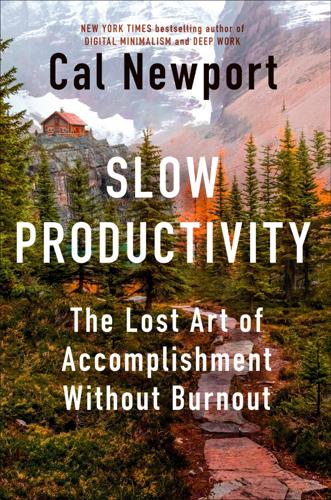
Slow Productivity: The Lost Art of Accomplishment Without Burnout
by
Cal Newport
Published 5 Mar 2024
Slow productivity supports legacy-building accomplishments but allows them to unfold at a more human speed. Though this book is about knowledge work productivity in general, it targets in particular anyone who has a reasonable degree of autonomy in their job. This obviously includes freelancers, solopreneurs, and those who run small businesses. Pseudo-productivity’s presence in these particular settings is not due to a boss’s demands but is instead largely self-imposed, which opens up vast potential for individual experimentation. My imagined audience, however, also includes those who might work for larger employers but still enjoy significant freedom in how they go about their work.
…
Leverage this reduced load to more fully embrace and advance the small number of projects that matter most. The request made here, of course, is easier explained than actually implemented. In the context of your professional life, busyness likely seems unavoidable. Clients demand attention, and managers drown you in requests. Even if you’re a solopreneur in full control of your days, the need for income might undermine your intention to reduce your workload. Jane Austen’s long writing sessions at her desk in Chawton cottage can seem a fantastic mirage for the knowledge worker facing an endlessly full inbox. My goal in this chapter is to persuade you not to give up on this aspirational vision of engineered simplicity.
…
Not only will your organization complete projects at a faster rate, your team members will revel in their newfound liberation from the scourge of having too much to do. The situation becomes trickier, however, when we turn our attention to individuals without direct control over how their work is assigned. Perhaps you’re employed by a company that still worships at the altar of a faster brand of productivity, or you’re a solopreneur dealing with clients who aren’t interested in learning some complicated new system. Haphazard, push-based workflows might seem unavoidable for the many who are stuck in such settings, but they don’t have to be. It’s possible to reap a substantial fraction of the advantages of a more enlightened pull approach even when you lack full control over your work environment.
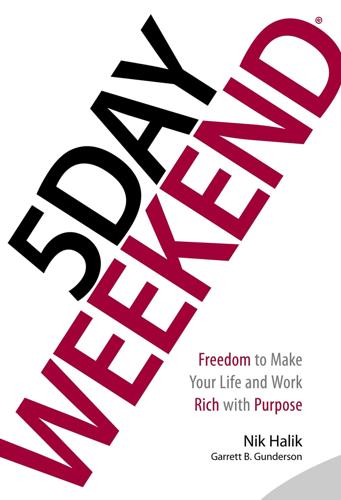
5 Day Weekend: Freedom to Make Your Life and Work Rich With Purpose
by
Nik Halik
and
Garrett B. Gunderson
Published 5 Mar 2018
Three Levels of Entrepreneurs Level 1: Wantrepreneur Wantrepreneurs have plenty of ideas, but rarely take massive action. They struggle to get anything off the ground. They keep lining up new and better ideas, but they don’t follow through. “By working faithfully eight hours a day, you may eventually get to be the boss and work twelve hours a day.” —ROBERT FROST Level 2: Solopreneur Solopreneurs invest in their education and start a business working for themselves. They take action but, unfortunately, they’ve created a job with active income, and the business is 100 percent reliant on them. They start generating money and their business is doing increasingly well. They suddenly realize they are victims of their own success and that the business owns them.
…
Maximize Your Production Call to Action Your Debt Free Plan PART III: INCOME GROWTH MAKE MORE MONEY 11 INCREASE YOUR ACTIVE INCOME • Start, Experiment, and Learn • Start as Small as Possible • Continuous Improvement 12 IT DOESN’T TAKE MONEY • Three Types of Capital: Garrett’s Value Equation • Leverage and Maximize Your Current Assets • Be Resourceful 13 EXPLORING ENTREPRENEURIAL IDEAS • Personal Services • E-Commerce • Fix and Flip • Domain Trading • The Sharing Economy • Online Opportunities • Direct Sales/Network Marketing 14 ANALYZE INCOME OPPORTUNITIES • Income Opportunity Score Sheet 15 BEFORE YOU QUIT YOUR JOB • Milestones to Accomplish • The Mindset to Cultivate • A Bridge Out Call to Action Your Entrepreneurial Income Plan PART IV: WEALTH CREATION GROW MORE MONEY 16 BUILD PASSIVE CASH FLOW • Three Levels of Entrepreneurs • Transitioning from Solopreneur to Entrepreneur • From $5,000 to $2.3 Million in 27 Months • From Golden Handcuffs to Freedom • What If Your Business Can’t Be Scaled 17 REAL ESTATE CASH FLOW • Cash Flow Is King • Building Your Real Estate Cash Flow Machine • Buying Your First Property • Fix-up Costs Before Renting • Overcoming the Down Payment Hurdle • Real People Building Real Estate Wealth • Tips from 27 Years of Real Estate Investing • You Can Do This!
…
You focus on elements of the business that you are most passionate about and outsource specific tasks to specialists within the company. The liberated entrepreneur is the musical conductor who gets paid to direct an ensemble pit of musicians (specialists) who are tasked with the running of the enterprise. Transitioning from Solopreneur to Entrepreneur The biggest casualties of self-employment are your time and your freedom to travel. Here’s how you can escape the self-employment trap and build a business that can eventually generate passive income for you: 1. Build the Foundation First, you want to be very clear on who you are, what you stand for, what you stand against, and what you really want to define your organization.

The $100 Startup: Reinvent the Way You Make a Living, Do What You Love, and Create a New Future
by
Chris Guillebeau
Published 7 May 2012
You need the kind of nuts-and-bolts wisdom that only comes from hard-earned experience. Chris Guillebeau has been in the trenches for years, and in The $100 Startup he guides you step-by-step through how he and dozens of others have turned their passions into profits. It’s essential reading for the solopreneur!” —Todd Henry, author of The Accidental Creative “Starting your own business doesn’t have to be expensive or difficult. Follow Chris’s advice, and you’ll help people, have fun, and never work for ‘the man’ again.” —Josh Kaufman, author of The Personal MBA: Master the Art of Business Copyright © 2012 by Chris Guillebeau All rights reserved.
…
In another part of Columbus, Ohio, Amy Turn Sharp runs a handcrafted toy company. Startup cost: $300. Nicolas Luff in Vancouver, Canada, started with only $56.33, the cost of a business license in 2000. In New York City, Michael Trainer started a documentary business for $2,500, the cost of a camera—which he later sold for a profit. Most of these people are solopreneurs, running a light operation by design. But larger businesses with multiple employees also opted to keep the initial costs as low as possible. David Henzell, the agency founder in the United Kingdom whom we met in Chapter 1, started his new partnership for $4,000. Scott Meyer and a business partner, whom we’ll hear more about in Chapter 9, started a South Dakota media firm with four employees for under $10,000.
…
The decision on going big versus staying small is unique to each person (we’ll look at it much more in the next two chapters), but in this section we want to focus on things you can do to increase income without hiring additional employees or bringing in outside investors. All the tweaks mentioned above can be done by a solopreneur. Some might be easier with assistants, contractors, or employees, but none require a team. Before we close it out, let’s look at a key distinction between two different kinds of growth. You can grow a business one of two ways: horizontally, by going wide and creating different products to apply to different people, or vertically, by going deep and creating more levels of engagement with customers.
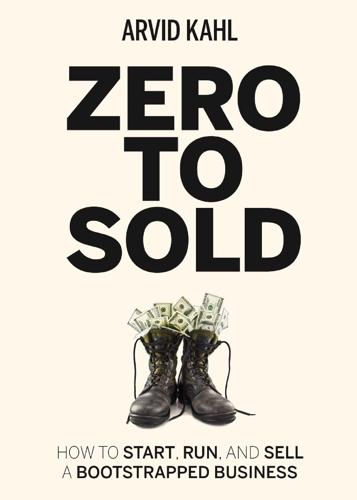
Zero to Sold: How to Start, Run, and Sell a Bootstrapped Business
by
Arvid Kahl
Published 24 Jun 2020
You have not seen daylight for a few weeks, your children only see you hunched over your laptop, and you haven’t called your parents in over three months. You keep doing this until you burn out. Welcome to cargo-culting. It will keep you from achieving your goals. “I have to do everything by myself because I’m a solopreneur, and that is what they do.” The term solopreneur is aspirational for many people who want to start a business—keeping all the profits! Never having to explain yourself! Full control over every aspect of the company! And then reality hits, you run into brick walls, your energy levels are depleted, and you don’t enjoy work anymore.
…
If you're selling to a niche that understands the bootstrapping life, such as the startup market, you will also encounter this behavior. In the end, it boils down to honesty. Can you reliably deliver the levels of service that your customers expect? If you explain from the beginning that you are a solopreneur and that may mean that the service can be shaky when you're not there to fix it, you will allow your prospects to pre-sort themselves. You wouldn't want to have a customer you cannot yet serve anyway. Once the business enters the Stability Stage, you can change your messaging to attract those customers.
…
A lot of people in the indie business sphere have spoken very negatively about funding in the past, mostly due to the fact that whenever people talked about funding, they were thinking of venture capital. But this has changed. There are now a number of alternative ways of injecting money into your business, and most of them don't involve complicated ownership arrangements. While makers and solopreneurs generally tend to avoid financing, there are opportunities for external money to do great good. It's just a matter of carefully weighing the pros and cons. There is wisdom in knowing what's possible, even when you don't want to use it. If you decide to never take any more, that's awesome. You'll learn how to create a business from nothing, a truly bootstrapped company all the way.

The Introvert Entrepreneur: Amplify Your Strengths and Create Success on Your Own Terms
by
Beth Buelow
Published 3 Nov 2015
Words of truth that bubble up are compassion, intention, grace . . . grounded in those values, I can make choices based on what’s right for me, instead of what someone else tells me I “should” be doing. As an introvert, you know: The truth isn’t out there. It’s in you! Company Culture and Values: Not Just for the Big Guys If you’re a solopreneur, chances are you’ve not given a lot of thought to your company culture. And if you have employees, you’ve probably noticed a particular culture developing, and it may or may not be intentional. In reading the enlightening corporate history of Zappos, Delivering Happiness by introverted CEO Tony Hsieh, I was reminded that the concept of culture is highly relevant, whether you are a company of one or one thousand.
…
Note: More leadership resources are recommended in the Resources section of TheIntrovertEntrepreneur.com. Consider reading leadership materials, taking a few workshops or seminars, or engaging a coach to support you in finding your unique style and growing your leadership skills. Even if you remain a solopreneur in the midst of your growth period, you can still be a leader among your peers and within your industry. Once you’ve done some introspection about who you are as a leader, it’s time to determine who you need to lead. The answer may be obvious. For instance, if you are experiencing a backlog of orders and are having trouble keeping up, an administrative assistant who is responsible for order fulfillment would probably be a wise first hire.

Pivot: The Only Move That Matters Is Your Next One
by
Jenny Blake
Published 14 Jul 2016
Think of someone further along in their career, either in your industry or the one you may want to be in, who is doing what you are hoping to achieve, and ask if you can help with any overflow he or she does not have the time or desire to tackle. This is not about being lazy. By drafting behind someone who has already cleared a way forward, you can learn from their approach and benefit from overflow they cannot handle. You will pay it forward someday by helping others draft behind you. I was in a lead position when coaching other solopreneurs, people running their own one-person businesses. As I shifted toward working with executives and entrepreneurs, I referred anyone who reached out for postgrad coaching to several of my clients whose primary goal was working with young professionals. It was rewarding to pass these opportunities along to other coaches who were thrilled to have the work.
…
For ongoing blog posts visit JennyBlake.me, and subscribe to the Pivot Podcast at JennyBlake.me/podcast. Subscribe to my twice-monthly behind-the-business newsletter at JennyBlake.me/updates, where I share curated lists of the latest Pivot-related tips, tools, books, and resources. For more personalized ongoing support, join our private community of solopreneurs and side hustlers at MomentumCrew.com. Want to Help Spread the Word? As my first book mentor Michael Larsen told me, “Authors don’t keep books alive, readers do.” If you enjoyed Pivot and think others could benefit, I would be grateful for your help in any of the following ways: Write a review, on the retailer’s site where you purchased the book and/or on Goodreads, to help others decide whether to purchase a copy.

The Buddha and the Badass: The Secret Spiritual Art of Succeeding at Work
by
Vishen Lakhiani
Published 14 Sep 2020
Great brands, great books, great restaurants are often unique because of the unique “flavor” given to them by their founders’ values. Think Nike, Apple, or Starbucks. These values are also the key principles, guiding beliefs, and foundational ideas that shape the culture. Foundational values come from the founding team of a company. They are used to decide who gets IN the door. If you’re a solopreneur or freelance, they are your values for how you operate. Organizational values are developed once people are in the door. They are the rules that govern the expected behaviors required for day-to-day collaborations to run smoothly. They are agreed upon by the company as a whole. As you grow your team and company, organizational values become increasingly important.
…
The classic way is to gather top employees in a boardroom, think up a sexy-sounding paragraph to tell the story of the company, and then post it everywhere. Cameron says this is wrong. Firstly, the Vivid Vision must come from the founder of the company. Or the leader of the team. And if you’re a solopreneur or leading a division in your company, congratulations, you’re it. It’s your responsibility to create that Vivid Vision for your division. Cameron provided me a useful piece of advice: “Forget mission and vision. These words are too confusing,” he said. “Instead you need to think of it as one; your core purpose.”

It Doesn't Have to Be Crazy at Work
by
Jason Fried
and
David Heinemeier Hansson
Published 1 Oct 2018
That turns life into work’s leftovers. The doggie bag. What’s worse is that long hours, excessive busyness, and lack of sleep have become a badge of honor for many people these days. Sustained exhaustion is not a badge of honor, it’s a mark of stupidity. And it’s not just about organizations —individuals, contractors, and solopreneurs are burning themselves out in the very same way. You’d think that with all the hours people are putting in, and all the promises of new technologies, the load would be lessening. It’s not. It’s getting heavier. But the thing is, there’s not more work to be done all of a sudden. The problem is that there’s hardly any uninterrupted, dedicated time to do it.
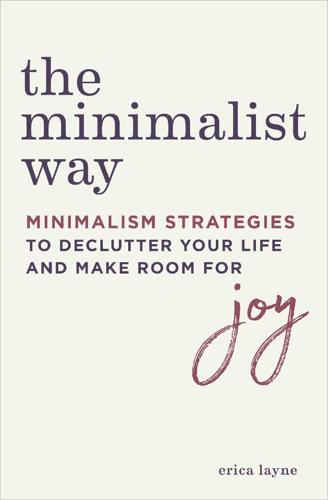
The Minimalist Way
by
Erica Layne
Published 25 Feb 2019
Try experimenting with the following: 1.Unsubscribe from brand email lists. The (unfortunate) power of those “20% off!” coupon codes cannot be understated! 2.Install an ad blocker to reduce the amount of advertising you see while browsing online. This idea is controversial because many small businesses and solopreneurs rely on the income they earn from third-party advertising, so an alternative is simply being more selective about the websites you visit. If you find that the advertising on a site you visit frequently is disproportionately influencing your consumerism, take a break from that site. 3.Unfollow any social media influencers who make you feel like what you have is not enough—or who continually share products and post sponsored content with the hope that you’ll click through and buy. 4.If your budget and your personal values allow, upgrade your subscription-based entertainment accounts (like Pandora, Spotify, or Hulu) to the ad-free plans. 5.Consume less media in general, and read more books, which are ad-free!
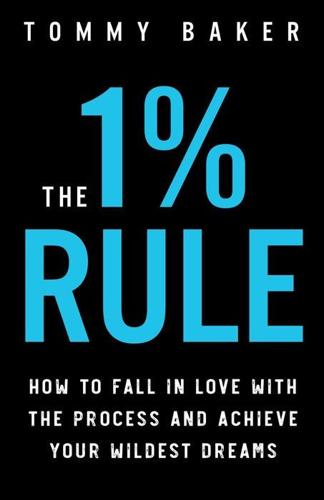
The 1% Rule: How to Fall in Love With the Process and Achieve Your Wildest Dreams
by
Tommy Baker
Published 18 Feb 2018
If things are complex and require endless planning, blueprints, and meetings, then we can avoid the work today and put if off until tomorrow, next week, or next quarter. This is why companies will spend millions of dollars on strategic retreats and create beautiful binders which end up sitting on the shelf. It’s why the solopreneur focuses on small, insignificant tasks. It’s why we constantly feel we need a little more time and planning. No, thanks. Simplicity is the name of the game and I encourage you to lean into it. The more you can simplify and streamline your processes down to answering the 1% Rule question, the more you’ll create the unbreakable momentum designed to push you over the edge.
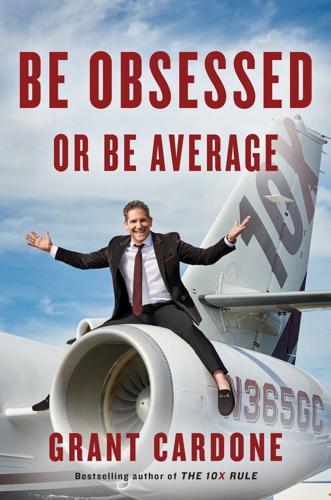
Be Obsessed or Be Average
by
Grant Cardone
Published 20 Sep 2016
To understand how deep this epidemic runs, consider the following: Studies by Bankrate.com suggest that somewhere between 62 percent and 76 percent of Americans live paycheck to paycheck, including many with what used to be solid, reliable middle-class jobs and middle-class incomes. According to a 2012 Washington Post article, over half of the U.S. population is on some form of government assistance. According to Forbes, there are currently over 28 million small businesses in America, 75 percent of which are run by solopreneurs who, by definition, work alone and have no employees—which means they do everything themselves. This same study shows that of all small businesses 92 percent make less than $250,000 a year and 67 percent break even or lose money. According to MarketWatch, in 2015 Americans had over $1.3 trillion in college debt.
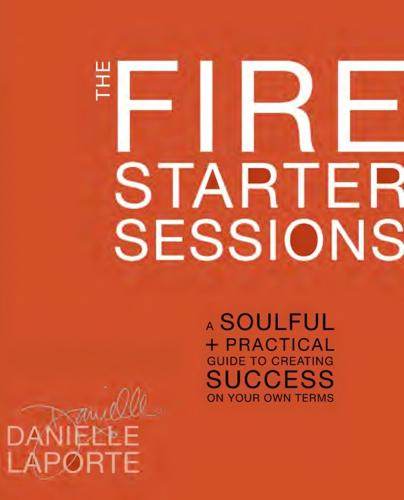
The Fire Starter Sessions: A Soulful + Practical Guide to Creating Success on Your Own Terms
by
Danielle Laporte
Published 16 Apr 2012
—Kid Rock If you’re working in the marketing department of a major blue-chip firm crafting eco-friendly slogans to cover up your toxic waste, or at an ad agency devising sexy images about how cans of liquid sugar are going to make us feel groovy, then give me a minute of your time. If you’re a solopreneur acting like you’ve got a big team on payroll, with offices on the top floor, when you’re really just a one-person show rocking it out from your kitchen table, please pay attention to what I’m about to say. If your personal bio says things such as “Jane graduated at the top of her class and strives to provide her customers with excellence”—if you’re feeling even slightly closeted, cloaked, or hemmed in by your own professional image, listen up.

Long Game: How Long-Term Thinker Shorthb
by
Dorie Clark
Published 14 Oct 2021
If you enjoyed chapter 7, “The Right People, the Right Rooms,” you might also like this short ebook I wrote about how to build authentic, long-term relationships—even if you’re an introvert or dislike the concept of networking. Learn more at https://dorieclark.com/stand-out-networking. Entrepreneurial You. This is a book for entrepreneurs and solopreneurs—current or aspiring—who want to learn how to develop new income streams. It’s also useful for corporate employees who are interested in launching a side gig. If you enjoyed the discussion in The Long Game about how to develop strategic, low-risk career experiments with large potential upsides, Entrepreneurial You is worth checking out.

Free to Focus: A Total Productivity System to Achieve More by Doing Less
by
Michael Hyatt
Published 8 Apr 2019
Once you’ve finished the following exercises, you’re ready to move on to the next chapter. There you’ll learn how to handle the remaining tasks you can’t eliminate or automate by understanding the power of delegation. This one is powerful, even if you don’t think you have anyone to delegate to. You’ll learn tips and strategies that even the most isolated solopreneur can implement immediately, so don’t miss it. STREAMLINE YOUR TASKS Automation is a powerful force in productivity, but you won’t automate your life by accident. You’ll only get the time-saving benefits of automation if you take the time to design and implement the systems you want. To do that, I recommend two exercises.

Built for Growth: How Builder Personality Shapes Your Business, Your Team, and Your Ability to Win
by
Chris Kuenne
and
John Danner
Published 5 Jun 2017
In building a physical structure, one crew might dig the foundation while others focus on framing, wiring, or plumbing. Still others assemble the financing package. Building a large-scale business structure is not fundamentally different. No business builder creates a successful, durable, and valuable enterprise alone. After all, there is no such word as “solopreneur.” “Entre” is the mantra here: entrepreneurship requires collaborative connections between people and resources. In part 2 of this book, we offer practical advice to each Builder Personality on how you can best select and work more effectively with the three groups of people who have the greatest multiplier effect for your business—your cobuilder if you choose to have one (or more), your key employees, and your primary investors or executive backers.

Pattern Breakers: Why Some Start-Ups Change the Future
by
Mike Maples
and
Peter Ziebelman
Published 8 Jul 2024
And in many cases, it was a superior alternative. You can go to a Hilton anywhere in the world and have a great experience, but every Hilton is the same. Suddenly, you could rent someone’s house or apartment—and have a genuinely local experience that often was less expensive than a hotel. Airbnb created a new kind of democratized “solopreneur” ecosystem, allowing anyone who owned property to become an entrepreneur and monetize it. Airbnb changed people’s idea of travel. The Airbnb founders were not just digital natives who understood the changing online habits of people in their demographic; they were also Millennials, a cohort whose members were known for valuing artisanal experiences over corporate-branded ones.
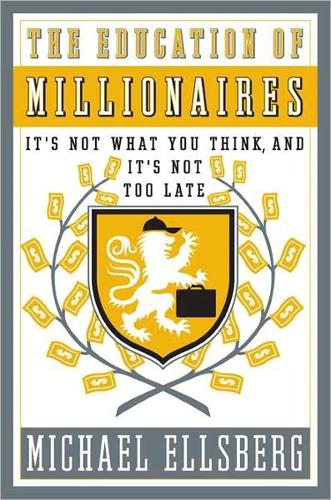
The Education of Millionaires: It's Not What You Think and It's Not Too Late
by
Michael Ellsberg
Published 15 Jan 2011
For knowledge workers in the developed world, the tools of their trade have become so ridiculously cheap that the “means of production” have once again become affordable to individual workers. These workers no longer have to depend on bosses or large organizations to furnish them with the means of production. They can quit the factory-style organizations and become “butchers, bakers, and candlestick makers” once again—that is, digitally connected entrepreneurs and solo-preneurs. Pink calls it “Digital Marxism: In an age of inexpensive computers, wireless handheld devices, and ubiquitous low-cost connections to a global communications network, workers can now own the means of production.”11 And increasingly, more and more of them (especially younger ones who have grown up with the Internet) are deciding to take their means of production, strike out on their own with their copy of The Four-Hour Workweek in their laptop bag, and flip a big, bad massive bird to their former employers.

Mood Machine: The Rise of Spotify and the Costs of the Perfect Playlist
by
Liz Pelly
Published 7 Jan 2025
“My optimism comes from hoping for the imminent collapse of these ‘attention economy’ structures,” he said. While Spotify was busy capitalizing on the hollow idea of “indie vibes,” these truly independent artists and labels were struggling in a music business that seemed set on finding new ways to alienate and disempower them. * * * As the solo-preneur emerged, direct-uploading their songs via third-party digital aggregators, so did a whole cottage industry of middlemen selling services to help these enterprising “indie” artists act more like pop stars without labels. To these businesses, the “aspiring creators” were their target customers. And on sale was the promise of a music career.

Financial Freedom: A Proven Path to All the Money You Will Ever Need
by
Grant Sabatier
Published 5 Feb 2019
Finding someone who actually enjoys the work and believes in your vision will be more valuable and helpful than just hiring an employee who just watches the clock. Not only are they likely to go the extra mile, they will stick with you as you grow and help drive more growth. I also recommend you think hard again about what kind of life you really want and what trade-offs you are willing to make for money. The transition from being a solopreneur to being an entrepreneur is tough. As we’ve already discussed, there are many challenges to being an entrepreneur, and while you will still be the boss, having to hire and manage a team, as well as increase your sales to pay for your growing team, can add a lot more stress to your life than just managing yourself.